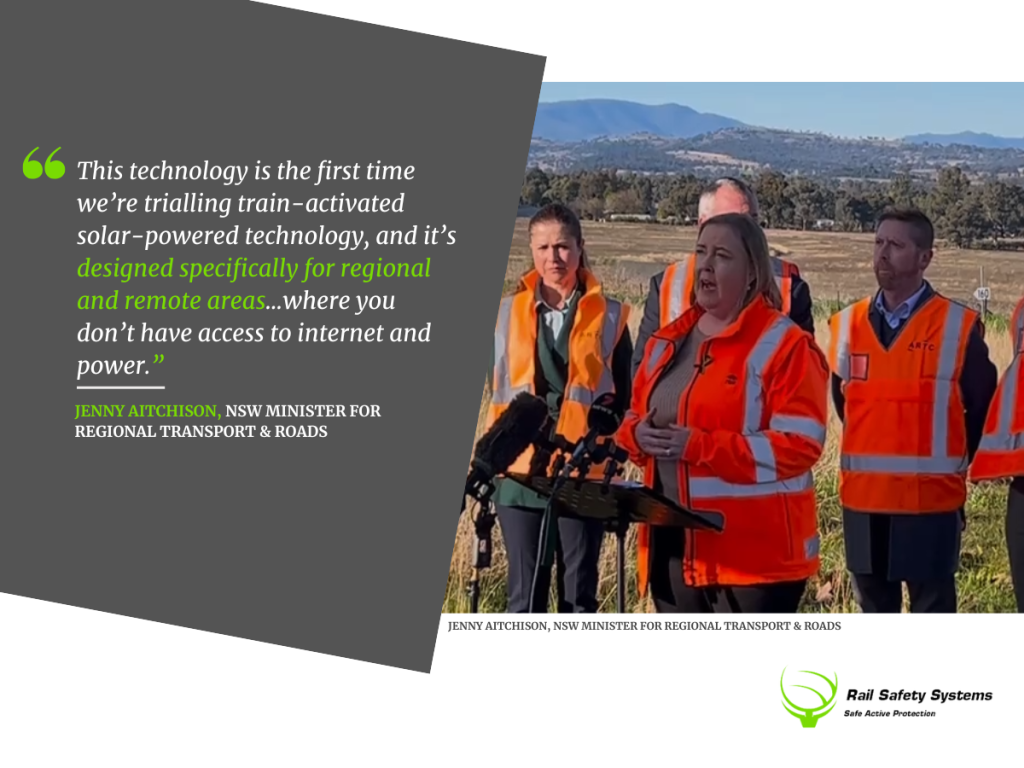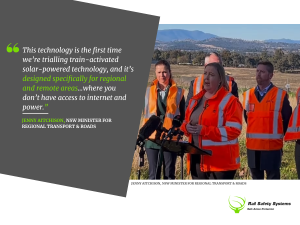The launch of the Rail Active Crossing System (RAXS) near Quirindi was covered by ABC New England North West, highlighting the importance of the trial in improving safety at regional level crossings.
The Callaghans Lane site, which was the scene of a fatal crash in 2023, is the first in New South Wales to use train-activated, solar-powered wireless technology to turn a passive crossing into an active one.
NSW Regional Transport and Roads Minister Jenny Aitchison attended the launch and spoke about the significance of the trial during National Rail Safety Week.
“Level crossing deaths are always tragic and there was a terrible fatal crash in 2023.
“So we’ve got for the first time in New South Wales a new rail active crossing system called RAXS. This technology is the first time we’re trialling train-activated solar-powered technology, and it’s designed specifically for regional and remote areas like Callaghans Lane, where you don’t have access to internet and power,” Minister Aitchison said.
She also explained the practical benefits for drivers.
“There are around 2,700 level crossings across New South Wales, most of them in the regions.
“This technology allows what we call a passive crossing, which doesn’t have lights or engagement with trains, to be turned into an active crossing. When a train approaches, the system activates flashing lights and bells to alert the driver to stop.
“It will be a significant benefit for motorists because they will actually be able to see that a train is coming.”
The ABC report highlighted how RAXS, when combined with other safety measures such as mapping crossings in GPS systems, can provide drivers with more information to make better decisions and reduce the risk of accidents.








